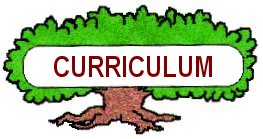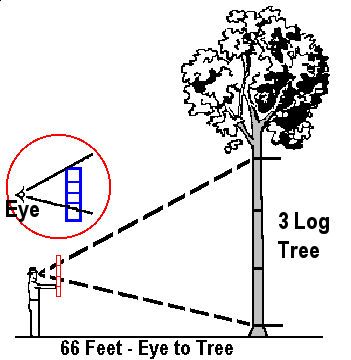

Home Page |
MICHIGAN FORESTS FOREVER TEACHERS GUIDE
| MEASURING TREE HEIGHTS |  |
HOW TO MAKE AND USE A "HEIGHT STICK"
The height stick is used to estimate the height of the
merchantable portion of a tree in eight-foot pieces, or the number of
eight-foot pieces to an estimated top diameter. Typically, the top diameter for
pulpwood is about 5 inches and must be estimated by the cruiser. The top
diameter for sawlogs is more variable, but often 9 inches for softwoods and 11
inches for hardwoods. This height stick is reasonably accurate WHEN USED
CORRECTLY!

1. Stand one chain (66 feet) back from the tree. Accuracy is important.
2. Select the top diameter spot(s) before using the stick.
3. Hold the stick 25 inches from your eye.
4. Hold the stick VERTICAL . . . this is important.
5. Line the bottom of the stick up with the stump height (6-12” off the ground).
6. Without moving your head or the stick, count the number intervals on the stick BELOW the top diameter(s) of the tree.
7. Call out your readings to the tally-person. For example; “two logs and three sticks”, would mean two 8-foot logs with three 8-foot pulpsticks above the logs.
|
HOW TO MAKE A HEIGHT STICK All you need is a planed piece of wood and mark-off intervals at 3.1" inches. Label each interval line as "1", "2", "3", etc. Each
interval is equivalent to
an Sticks should be light to carry, but strong enough to not break easily. |
|
 |
 |
This website was developed and created by Michigan State University Extension for the teachers of the State of Michigan. |
Page Name:
Curriculum/SupportDocs/StickUse.htm